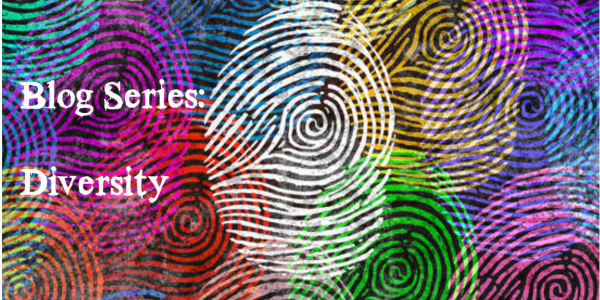
Affect theory attempts to make sense of our emotions and their implications. Specifically, affect theory is aimed at understanding feelings that are “relational and transformative” (Flatley 12). We often feel strong emotions when we read a particularly dramatic piece of fiction, but what are we to do once we understand what we feel? Furthermore, what can the fiction of David Foster Wallace do to help us make sense of these emotions? Is there any hope to be gleaned from Wallace’s depictions of mental illness? Can one person really understand what it’s like to be another person? Can one empathize with another’s depression?
In my opinion, Wallace’s most devastating piece of writing is his short story “The Depressed Person.” The key to understanding this story lies in its opening sentences:
The depressed person was in terrible and unceasing emotional pain, and the impossibility of sharing or articulating this pain was itself a component of the pain and a contributing factor in its essential horror. Despairing, then, of describing the emotional pain or expressing its utterness to those around her, the depressed person instead described circumstances, both past and ongoing, which were somehow related to the pain, to its etiology and cause, hoping at least to be able to express to others something of the pain’s context, its—as it were—shape and texture. (Wallace 37)
Right from the start of the story, we learn that no amount of effort can allow the depressed person to express what she is feeling. Even though the depressed person expresses so much sadness, anguish, and grief, her friends and family can never truly understand her feelings. What I wish to argue here is that not only do the other characters in the story fail to understand what it is like for the depressed person to undergo this “unceasing emotional pain,” but we as readers inevitably fail to understand it as well (Wallace 37). The story is constructed in such a way that it alienates us from the depressed person’s inner turmoil. This alienation is through no fault of Wallace. Rather, this story displays that, no matter how hard a person may try, communicating exactly how one feels about one’s own inner sadness is impossible and we can at best only understand “circumstances, both past and ongoing,” rather than the big picture (Wallace 37). To borrow a phrase from Susan Sontag’s Regarding the Pain of Others, “No ‘we’ should be taken for granted when the subject is looking at other people’s pain” (7).
We might assume that, when confronted with a term such as “depression” or “sadness,” the essential emotion that we associate with the term in our heads is a universal feeling, and that everyone conceives of this feeling in the same way. One’s internal image of depression might be imagined to be predetermined and we associate a particular mode of sadness with this term. As Megan Watkins points out in “Desiring Recognition, Accumulating Affect,” “Affect is often conceived as autonomous and ephemeral” (269). Wallace’s story, however, obliterates this limited notion by displaying what Watkins calls the “relational phenomenon” of affect (270). Or, as Sara Ahmed argues, because affect is determined by one’s relationship to an object, “we are made happy by different things, we find different things delightful” (31). As a result, we do not automatically adhere to the depressed person’s notion of depression just because we learn about her life and her feelings. As Ahmed explains: ‘the concept of affective contagion tends to underestimate the extent to which affects are contingent … to be affected by another does not mean that an affect simply ‘leaps’ from one body to another. The affect becomes an object only given the contingency of how we are affected, or only as an effect of how objects are given” (36). We would be foolish to pat ourselves on the back for being completely empathetic individuals after putting down “The Depressed Person.” An accurate depiction of depression does not enter the reader’s head via osmosis. The depressed person still remains imprisoned by the pain of depression within the pages of Wallace’s story with no one really there to understand her.
Take, for example, the affective response that springs from the depressed person’s memories of hearing a sexist joke from some fellow students during her college days. The depressed person recalls this joke as “a traumatic incident” that forces her to view the act of dating as an “emotionally Hobbesian meat market” (Wallace 61; 60). When we read about this joke and the effect it takes on the depressed person, the reader can only relate to the depressed person’s feelings by way of their own similar (though not entirely identical) feelings. We might make the connection that a traumatic event from our past influences how we view the world currently. But, these events from our lives are going to have a different impact on our own minds and emotions because they are different events and we have different backgrounds and experiences than the depressed person herself. We cannot claim to have been in precisely the same state of emotional stability (or instability) that the depressed person embodies when she experiences this traumatic event. There is no real way to determine exactly how one would adequately sum up the nuanced ways in which this painful moment of cynical humor weaves its way throughout the depressed person’s future. I am reminded here of Virginia Woolf’s oft-cited statement on the indescribability of physical pain: “Let a sufferer try to describe a pain in his head to a doctor and language at once runs dry” (194). The same could be said of the complexities of emotional pain.
Language, as “The Depressed Person” shows, has its shortcomings when assessing the pain of another person. The words that the depressed person uses carry certain connotations when the therapist listens to her. The therapist, when hearing the depressed person describe herself as “pathetic,” cannot “support the use of ‘pathetic,’ since her gut (i.e. the therapist’s gut) was telling her that the depressed person’s proposed use of ‘pathetic’ felt not only self-hating but also needy and even somewhat manipulative” (Wallace 49). This scene emphasizes the failures of language. Depending on the listener, a depressed person’s use of a particular word or phrase is laden with particular implications, as a listener brings their own biases when assessing the vocabulary used by a person to describe their depressed feelings. Similarly, readers of this story bring their own biases in interpreting the thoughts and actions of the depressed person.
The story’s lack of closure, a recurrent device in Wallace’s fiction, illustrates perfectly our inability to understand truly how a depressed individual might feel. At the end of the story, the depressed person asks her friend over the phone “to share her very most private judgment of the depressed person’s ‘character’’s or ‘spirit’’s capacity for human caring” (Wallace 68-69). There is no doubt that whatever friend’s response may be, it will have some harmful impact on the depressed person’s mental health. We do not know precisely how, but it is clear that her depression will worsen in some way. Depression, Wallace shows, is not a singular emotion that is felt in the same manner at all times. Rather, it is experienced as a sort of continuum, at times combining anxiety, sadness, anger, or any other number of what Sianne Ngai calls “ugly feelings” (2). These feelings are felt in different combinations constantly over the course of the depressed person’s pained existence, each combination of feelings depending on the situation in which the depressed person might find herself at any given time.
What, then, is the point of attempting to communicate one’s feelings at all? Is fiction powerless in communicating effectively the ongoing daily misery of clinical depression due to the subjectivity of emotions? It would, of course, be abhorrent to suggest that we must stop helping depressed people, understanding the struggles of depressed people, or empathizing with others at all. I only wish to point out that understanding the differences and nuances that make each depressed case unique are what makes empathy so difficult or even, at times, impossible. This reading of “The Depressed Person” is not a call to abandon attempts at empathy. It is, rather, a call to check one’s own assumptions and personal biases when attempting to empathize with another person. In other words, one must not tell a depressed person, “I know how you feel,” because one simply does not know exactly how a depressed person feels at all.
Rita Felski notes in The Uses of Literature that a reader’s feelings are often ignored by literary critics in favor of more objective literary analysis. The emotions we feel when reading or experiencing art of any kind, Felski argues, “(are) frequently portrayed in literature and film but rarely awarded sustained or sympathetic attention in literary theory” (54). In the case of “The Depressed Person,” the reader’s emotional experience highlights the situational nature of varying levels of emotional distress experienced by the depressed person as a character and by depressed people outside of the work. Our feelings while reading are what separate us from the story’s protagonist. Affect theory, then, can help to illuminate how Wallace’s fiction often emphasizes this gap between a reader and the text. In “The Depressed Person,” a focus on affects shines a light on Wallace’s preoccupation with the impossibility of bridging this pain divide, and how our preconceptions and emotions limit how anyone can understand depression.
Ryan Kerr is an M.A. student in English at the University of Virginia. He holds a B.A. in English from the University of Arkansas. Kerr studies the novels of James Joyce and David Foster Wallace. His work has been published in Arkansas Review: A Journal of Delta Studies.
Works Cited
Ahmed, Sara. “Happy Objects.” The Affect Theory Reader, edited by Melissa Gregg and Gregory J. Seigworth, Durham, NC: Duke University Press, 2010, pp. 29-51.
Felski, Rita. The Uses of Literature. Malden, MA: Blackwell Publishing, 2008.
Flatley, Jonathan. Affective Mapping: Melancholia and the Politics of Modernism. Cambridge, MA: Harvard University Press, 2008.
Ngai, Sianne. Ugly Feelings. Cambridge, MA: Harvard University Press, 2004.
Sontag, Susan. Regarding the Pain of Others. New York: Picador, 2003.
Wallace, David Foster. “The Depressed Person.” Brief Interviews with Hideous Men. New York: Back Bay, 2007, pp. 37-69.
Watkins, Megan. “Desiring Recognition, Accumulating Affect.” The Affect Theory Reader, edited by Melissa Gregg and Gregory J. Seigworth, Durham, NC: Duke University Press, 2010, pp. 269-285.
Woolf, Virginia. “On Being Ill.” Collected Essays, Volume 4. New York: Harcourt, 1967, pp. 317-329.
